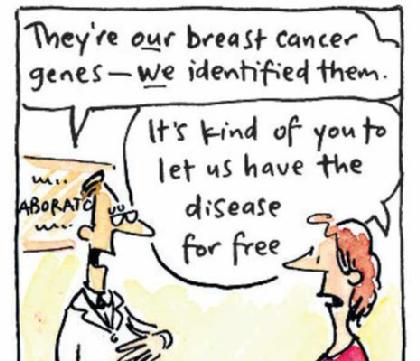[Ed Note: The following post is part of the TLF Editorial Board Test 2020-21. It has been authored by Yashashwini Santuka, a second year student of NALSAR University of Law.] Advanced systems of healthcare are imperative to the growth of countries, their economies and the well-being of its people. However, developing countries like India are…
Category: Medical Research
Employing Blockchain Technology To Systematize Organ Donation in India
[This post has been authored by Sindhu A., a final year student at School of Law, Christ University.] In terms of organ donation, India is ranked among the lowest globally, with an organ donation rate of a mere 0.86 donors per million. According to a recent study, around 5,00,000 people need organ transplantation every year…
Metadata by TLF: Issue 10
Welcome to our fortnightly newsletter, where our reporters Kruttika Lokesh and Dhananjay Dhonchak put together handpicked stories from the world of tech law! You can find other issues here. Aarogya Setu raises serious privacy concerns The Ministry of Health and Family Welfare in India has come under heavy scrutiny for the decisions they have taken…
Metadata by TLF: Issue 9
Welcome to our fortnightly newsletter, where our reporters Kruttika Lokesh and Dhananjay Dhonchak put together handpicked stories from the world of tech law! You can find other issues here. Zoom sued by shareholder for ‘overstating’ security claims Zoom Video Communications Inc. was hit with a class action suit by one of its shareholders on April…
Metadata by TLF: Issue 8
Welcome to our fortnightly newsletter, where our reporters Kruttika Lokesh and Dhananjay Dhonchak put together handpicked stories from the world of tech law! You can find other issues here. Supreme Court quashes RBI circular and permits cryptocurrency trading A three-judge bench of the Supreme Court on 4th March, 2020, allowed dealing in cryptocurrency, quashing an…
E-Pharmacy and Tech Law: An Interface (Part II)
This is the second part of a 2-part post authored by Anubhuti Garg, 4th year, and Gourav Kathuria, 2nd year, of NALSAR University of Law. Part I can be found here. The previous post analysed the laws applicable to e-pharmacies in India. The present post looks at the draft e-pharmacy rules and its implications and…
E-Pharmacy and Tech Law: An Interface (Part I)
This is the first part of a 2-part post authored by Anubhuti Garg, 4th year, and Gourav Kathuria, 2nd year, of NALSAR University of Law. Part II can be found here. The growth of the Internet and rise of companies like Amazon and Flipkart has meant that e-commerce is rapidly gaining traction in India. A…
PATENTING OF HUMAN GENES: Intellectual Property vs Access to Healthcare & Research
In the case briefs of Myriad Genetics vs Associated Molecular Pathology, amongst the several moving stories of victims of gene patents, contained the story of Abigail, a 10-year-old with a long QT syndrome, a serious heart condition that, if left untreated, could result in sudden death. A company in this case had obtained patent on two genes associated…
